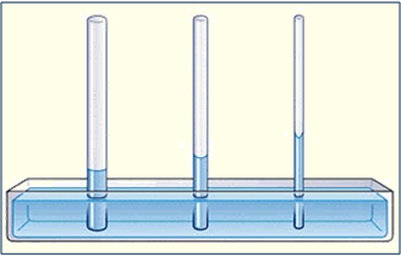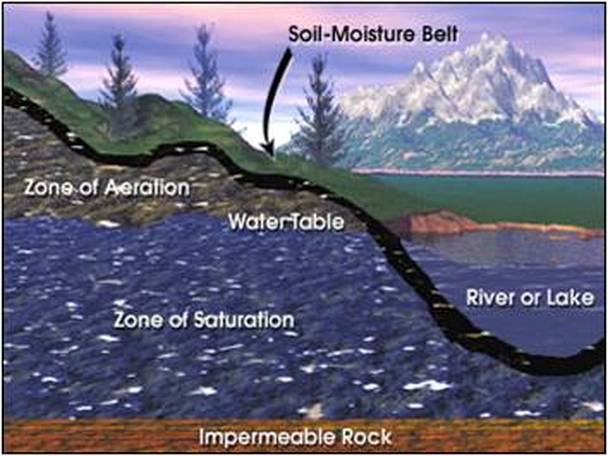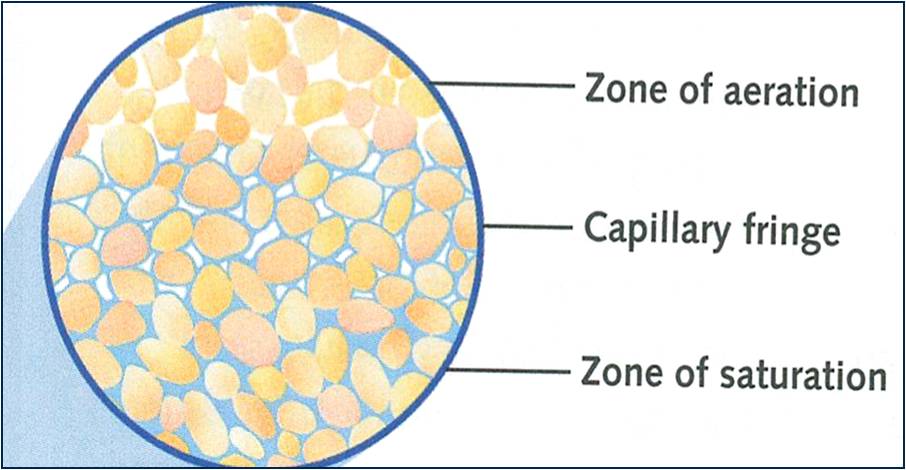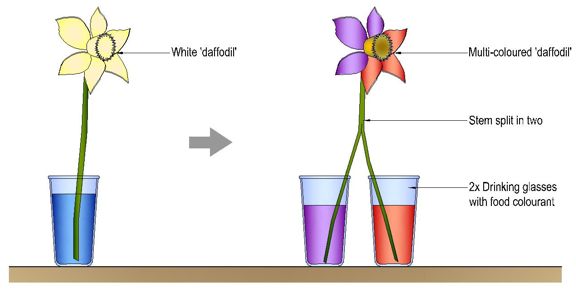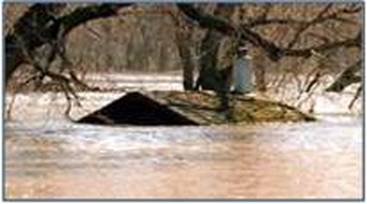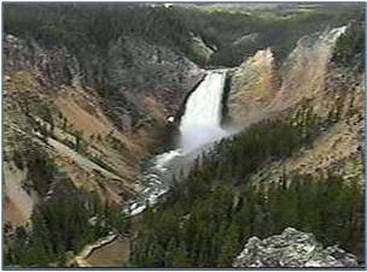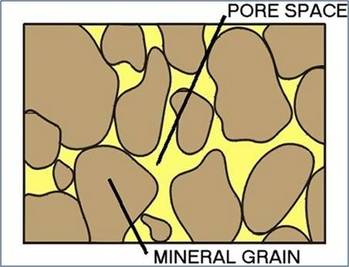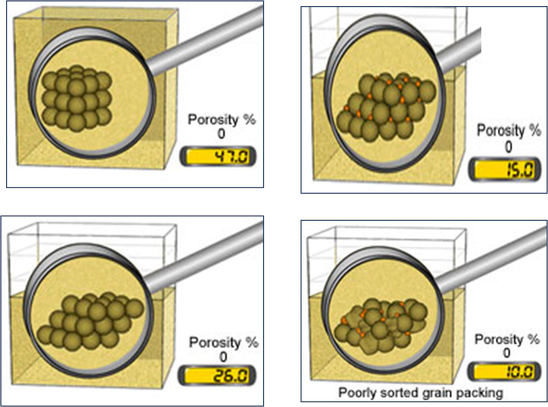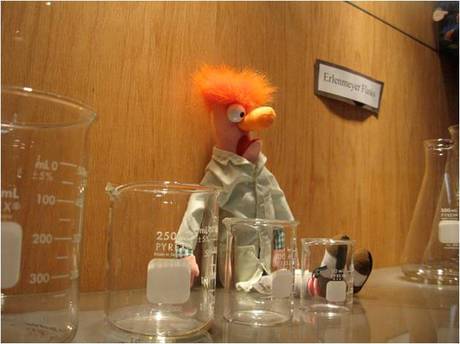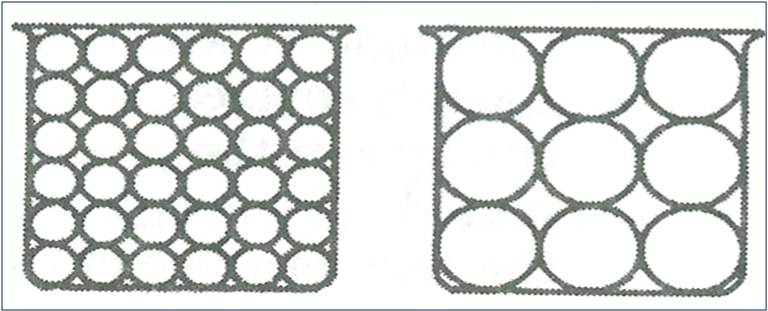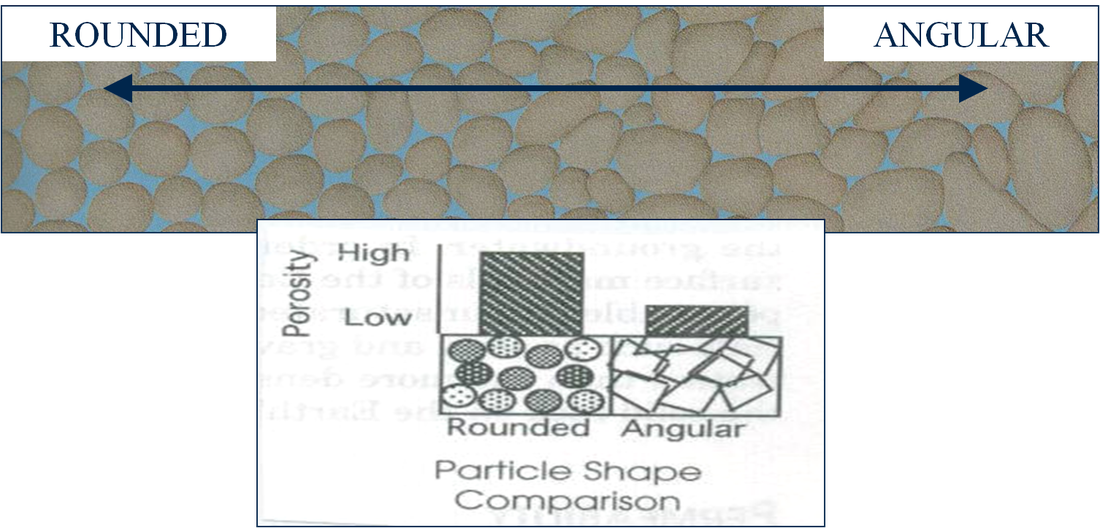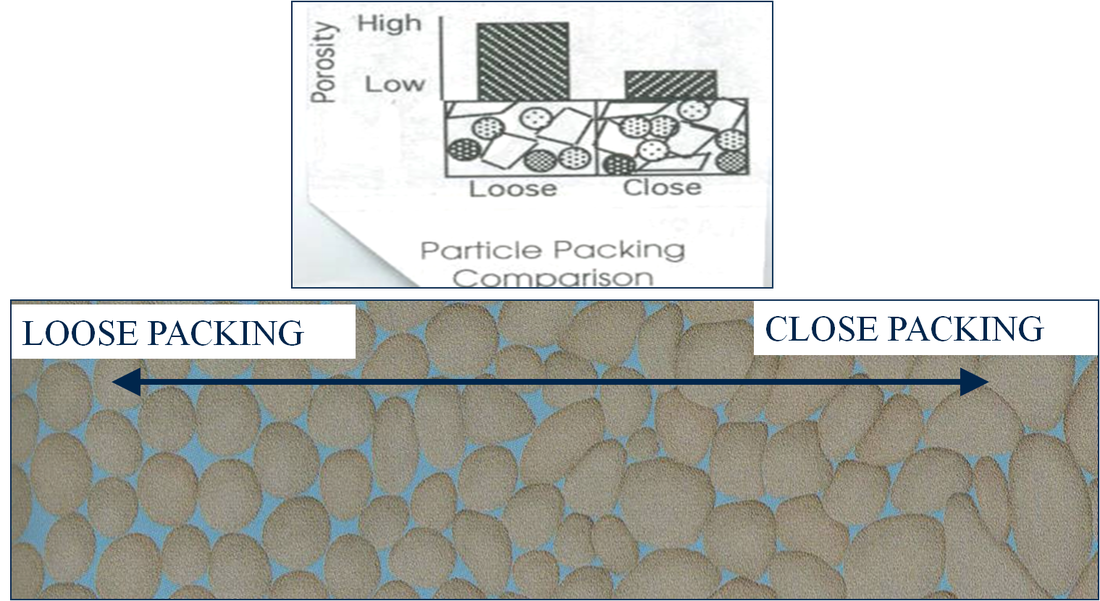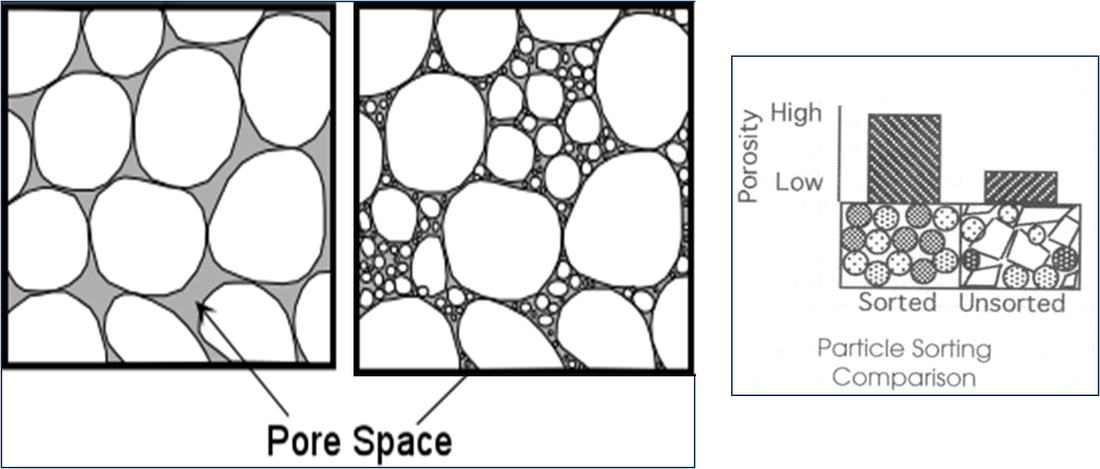The Water Cycle: Part 2 - Ground Water Hydrology
Subsurface Zones of Ground Water
|
Zone of Aeration: is located just below the surface where the spaces between the soil particles are filled with air.
Zone of Saturation: is where the spaces between the soil particles are filled with water. The Water Table: is the interface between the 2 zones. Impermeable: Will not allow water to pass through it.
Porosity: The % of open pore space in a sample of soil. Permeability: The rate at which water passes through a material. |
Capillary Action or (Capillarity): The process by which water is drawn upwards into pore spaces. Particle size effects the amount of capillary action (see diagram and graph to the left). •Smaller particles will have greater capillarity |
Factors affecting Porosity
Particle Shape: Rounded particles have more porosity than angular shaped particles
Packing: Loosely packed particles have more porosity than closely packed particles.
Sorting: The porosity of mixed sized
(unsorted) sediment particles is low, while the porosity of well sorted size will be high. The little particles settle between the larger ones, decreasing the overall percentage of empty space.
